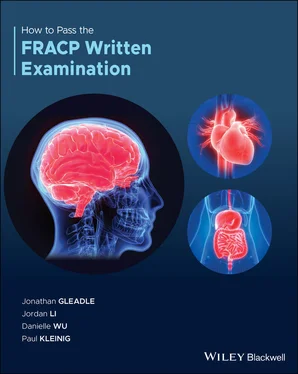A vitamin B12 deficiency is uncommon among gastric banding patients. A study found a 10 to 26% prevalence of vitamin B12 deficiency among gastric sleeve patients. Clinical manifestation of vitamin B12 deficiency includes paraesthesias, difficulty maintaining balance, poor memory, depression, loss of proprioception and vibratory sensation, peripheral neuropathy, gait abnormalities, cognitive impairment, glossitises, and macrocytic anemia.
Zinc is a mineral that helps maintain the immune system and is associated with cell division, cell growth, wound healing, and carbohydrate metabolism. A zinc deficiency also exacerbate hair loss, which is common within the first six months after bariatric surgery. Furthermore, patients who are zinc deficient may experience a metallic taste in their mouths. Studies had shown that BPD and RYGB patients are more likely to be at risk of zinc deficiency. However, one study found that 34% of gastric sleeve patients experienced zinc deficiency post‐surgery.
During routine clinic follow‐up after bariatric surgery, it is important to monitor weight loss progress and complications each visit, monitor adherence to appropriate diet and physical activity levels, review medications (avoid NSAIDs, adjust antihypertensives, cholesterol‐lowering medications, and diabetes medications as appropriate). Changes in drug absorption and bioavailability in post‐bariatric surgery patients make dosage adjustment important for some of the prescribed medications. The requirement for diabetes medications often reduced after bariatric surgery.
In terms of nutritional supplements, patients should be taking adult multivitamin and multimineral which contain iron, folic acid, thiamine, vitamin B12 (doses: two tablets daily for LSG or RYGB; one daily for adjustable LAGB), calcium 1200–1500 mg/day, titrate 25‐OH vitamin D levels >30 ng/mL, typical dose of Vitamin D required is 3000 IU/day. Additional iron and vitamin B12 supplementation is usually required and dosage is based on lab results. Laboratory assessments should include FBE, urea, creatinine and electrolytes, LFTs, uric acid, glucose, lipids (every 6–12 months), 25‐OH vitamin D, PTH, calcium, albumin, phosphate, B12, folate, iron studies annually, more frequently if deficiencies identified.

Lee P, Dixon J. Bariatric–metabolic surgery: A guide for the primary care physician. Austral Family Physician. 2017;46(7):465–471.
https://www.racgp.org.au/download/Documents/AFP/2017/July/AFP-Focus-Bariatric-metabolic-surgery-2017.pdf
35. Answer: F
36. Answer: H
Hypothyroidism is one of the most common endocrine disturbances alongside diabetes. It may present in the elderly with very non‐specific symptoms and signs. It should be considered in the differential diagnosis of anyone presenting with confusion (so‐called part of the ‘dementia’ screen) and general deterioration with no readily identifiable cause. It should not be missed as a cause of a range of symptoms from neurological signs, typically bradykinesia, reduced deep tendon reflexes, and paraesthesias from nerve entrapment (especially carpal tunnel syndrome) to abdominal pain from chronic constipation to mental disturbance manifest as confusion and apparent memory impairment. Other subtle signs of hypothyroidism include loss of the outer one‐third of the eyebrows with male‐pattern frontal balding, hypothermia, bradycardia, non‐pitting oedema (myxoedema), and dry, coarse skin.
TFTs are usually diagnostic and demonstrate a low free thyroxine (T4) with a high TSH in primary hypothyroidism. Very occasionally a low TSH and a low free T4 may be seen in the context of panhypopituitarism and assay of levels of sex hormones, ACTH, and other pituitary hormones will confirm the diagnosis.
Lithium is used in the treatment of bipolar disorder. It can cause major disturbance in water balance, manifest by polyuria and secondary polydipsia. This is because of decreasing urinary concentrating ability resulting from impaired responsiveness of the distal nephron to anti‐diuretic hormone (ADH) which is known as nephrogenic diabetes insipidus. In most cases there is a correlation between impaired urinary concentrating ability and duration of lithium therapy or total lithium dose.
Nephrogenic diabetes insipidus in adults is usually partial with mild symptoms. Usually the serum sodium is normal or mildly elevated, the plasma osmolality is within normal range, the urine osmolality is low (<300 mOsmol/kg) and the urine volume is between 2.5 and 6 L/day. However when patients are fluid depleted, there is a marked rise in serum sodium, a rise in plasma osmolality urine osmolality that may exceed that of plasma. The water deprivation test is useful in diagnosis: the urine osmolality is usually <300 mOsmol/kg after dehydration with no further or a minimal (<95) rise after desmopressin. In partial nephrogenic diabetes insipidus, the urine osmolality is between 300 and 750 mOsmol/kg after dehydration and is <750 mOsmol/kg after desmopressin. Lithium‐induced nephrogenic diabetes insipidus is usually reversible on stopping therapy but a few patients remain symptomatic long after the lithium has been discontinued. If the urine volume exceeds 4 L/day, treatment with thiazides and amiloride has been advocated. Preventive measures include education of patients and their carers about maintaining adequate hydration. The serum lithium level should be kept between 0.5 and 0.8 mmol/L. Annual measurement of 24‐hour urine volume is a simple and effective screening test.

Gitlin M. Lithium side effects and toxicity: prevalence and management strategies. International Journal of Bipolar Disorders. 2016;4(1).
https://journalbipolardisorders.springeropen.com/articles/10.1186/s40345-016-0068-y
Конец ознакомительного фрагмента.
Текст предоставлен ООО «ЛитРес».
Прочитайте эту книгу целиком, купив полную легальную версию на ЛитРес.
Безопасно оплатить книгу можно банковской картой Visa, MasterCard, Maestro, со счета мобильного телефона, с платежного терминала, в салоне МТС или Связной, через PayPal, WebMoney, Яндекс.Деньги, QIWI Кошелек, бонусными картами или другим удобным Вам способом.














